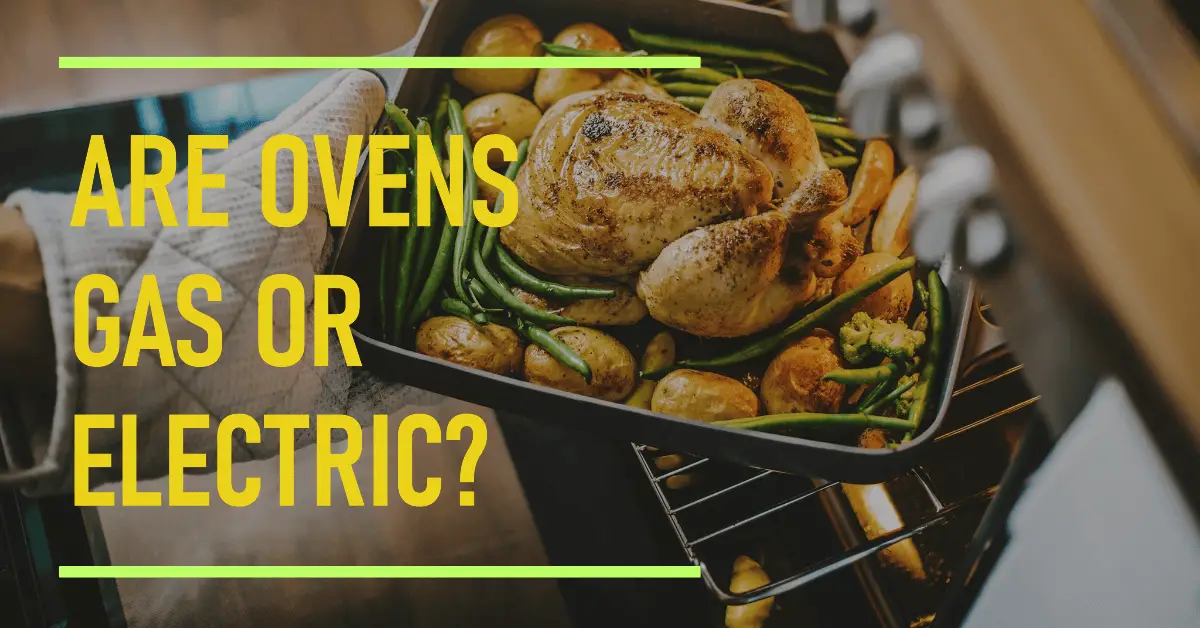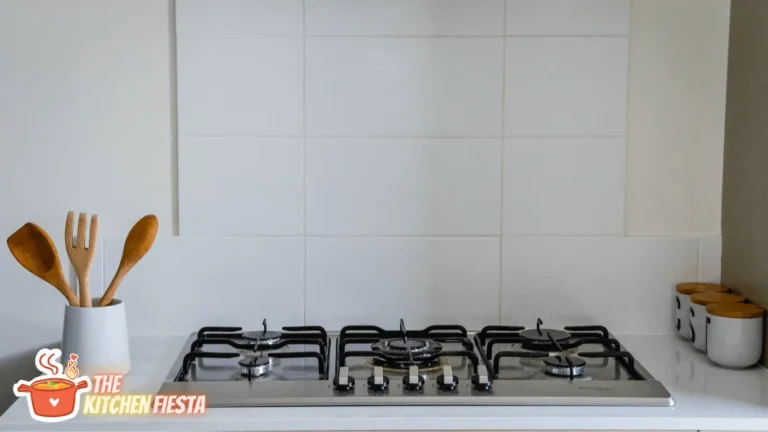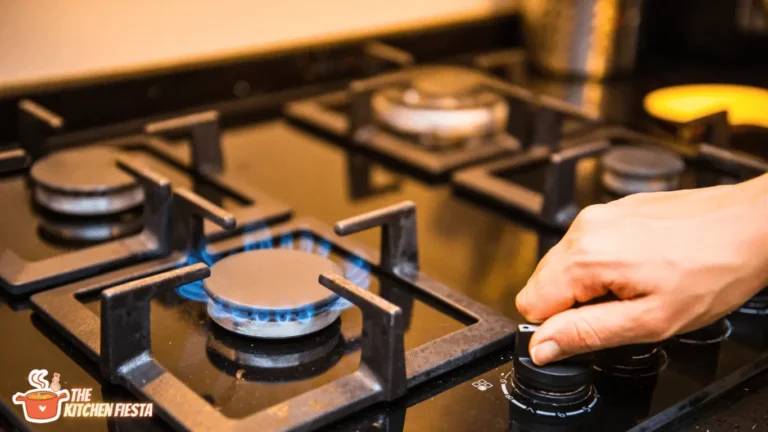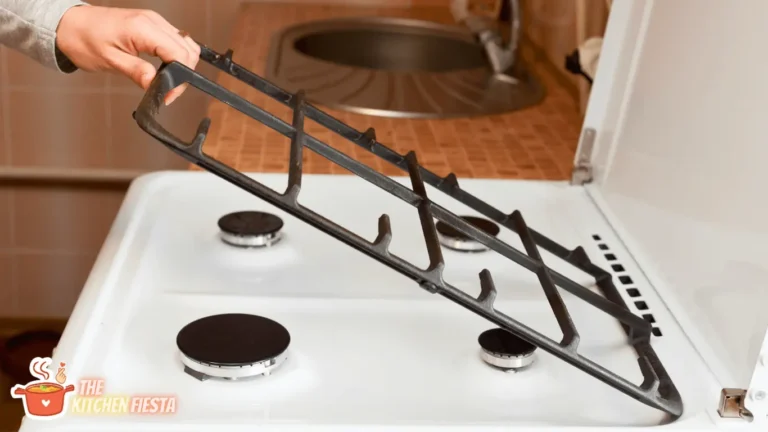Are Ovens Gas or Electric? The Pros and Cons of Each Oven Type

Whether you’re outfitting your first kitchen or upgrading old appliances, one key decision is what type of oven to get – gas or electric. Both have their passionate fans and detractors.
Gas ovens have been favored by generations of home bakers and professional chefs. Yet electric ovens are increasingly popular thanks to new features and energy efficiency improvements.
The short answer is that gas and electric ovens each have advantages and disadvantages. The right choice depends on your cooking habits, costs, and personal preferences.
In this detailed guide, we’ll compare gas vs electric ovens to help you decide:
- How gas and electric ovens work
- The pros and cons of each design
- Which is better for key tasks like baking and roasting
- Cost comparisons of gas vs electric
- Reliability, safety, and other factors to consider
- Professional chef opinions on gas vs electric
- Key takeaways to help choose the best oven for your kitchen
Let’s start by looking inside these two major types of ovens to understand how they create heat.
How Do Gas and Electric Ovens Work?
Gas and electric ovens operate very differently, producing heat in distinct ways. Here is an overview of the key mechanisms of each design:
How Gas Ovens Work
Gas ovens utilize natural gas or propane fed from an outside supply line. The gas is ignited and burns to create flames inside the oven.
This combustion process heats the air within the oven cavity. The hot air then circulates by convection to cook the food.
The temperature is controlled by adjusting a gas valve, which regulates the flow rate of the gas entering the oven. More gas flowing creates a higher flame and more heat.
Most gas ovens distribute the flame and heat using either multiple burners on the floor of the oven or a looping burner around the back wall.
How Electric Ovens Work
Electric ovens use electricity to power heating elements that warm up the interior of the appliance.
The most common design has both a lower element at the bottom of the oven and an upper element at the top or back. This provides heat from both directions to warm the air.
The temperature is set and automatically regulated using electronic controls and thermostats. This allows very precise and consistent temperatures.
Some electric ovens also use fans and ventilation systems to distribute the heat from the elements throughout the oven. This helps prevent hot or cold spots.
Now that we’ve looked inside gas and electric ovens, let’s examine the key pros and cons of each design.
Gas Oven Pros and Cons
Gas ovens have remained popular for generations thanks to some clear advantages they offer. But they also have some inherent drawbacks to consider.
Benefits of Gas Ovens
- Open flame provides more even and direct heat
- Faster preheating compared to electric models
- Greater ability to precisely control temperature
- Excellent for baking breads and pastries
- Often preferred by professional chefs and bakers
The open gas flames in gas ovens deliver heat directly to the food. This makes them excel for tasks like crisping up pizza crusts or achieving perfect golden brown loaves of bread.
The gas burners heat up the oven cavity air quickly, allowing faster preheating. Combined with precise flame adjustment, this allows more exact temperature control compared to electric counterparts.
For these reasons, gas ovens have remained the gold standard for baking artisan breads among both professional chefs and home enthusiasts.
Drawbacks of Gas Ovens
- Require installation of a gas line by a professional
- Risk of gas leaks and related dangers
- Less energy efficient on average
- Potential hot spots on the oven floor
One downside of gas ovens is that they require a gas line to be installed and connected. This line must be plumbed directly from the gas supply outside your home and professionally hooked up to the oven.
If not properly maintained, gas lines and fittings can develop leaks. Gas leaks are not only dangerous due to fire/explosion risks, but also release harmful emissions.
When it comes to energy use, gas ovens tend to be less efficient overall. Some heat is lost from the flame up the oven exhaust or vent. Newer gas oven models are improving in this area though.
The open flames at the bottom of a gas oven can also create temperature irregularities. Food placed directly over a burner may heat up faster and brown more quickly.
Now let’s look at the pros and cons of electric ovens.
Electric Oven Pros and Cons
Electric ovens have their own set of advantages and disadvantages too. Here are some key ones:
Benefits of Electric Ovens
- More energy efficient in most cases
- Faster cool down after finished cooking
- No open flames to generate gas emissions
- Very even heat distribution
Thanks to direct conversion of electricity into heat through their elements, most electric ovens are more energy efficient than gas models. They tend to lose less heat in the process.
Electric ovens also cool down faster once they are turned off. Their heating elements quickly stop generating heat, allowing the appliance to return to normal temperatures faster.
With no open flame, electric ovens avoid any issues with gas emissions or leaks within the home. This provides some safety advantages.
The location of heating elements in electric ovens (bottom and top or back) promotes very even heat distribution in most cases. There are minimal hot or cold spots.
Drawbacks of Electric Ovens
- Tend to take longer to fully preheat
- Temperature regulation less precise
- Exposed heating coils can be hazardous
- Not ideal for artisan bread baking
The main downside of electric ovens is longer preheat times. Their heating elements take several minutes longer on average to reach target cooking temperatures.
Controlling the temperature can also be trickier with electric ovens. The electronic controls generally don’t allow as fine of calibration compared to the adjustable gas valve on a gas oven.
The heating coils in an electric oven are very hot and exposed during use. This poses a burn hazard if accidentally touched when the oven is on.
Finally, electric ovens don’t provide the right balance and distribution of heat for bread baking. Their dry even heat lacks the moisture and bottom browning power of a gas flame.
Now that we’ve covered dedicated gas and electric ovens, let’s look at the stove top differences.
How Do Gas and Electric Cooktops Differ?
The differences between gas and electric appliances also apply to cooktops and ranges. Here are some key ways gas and electric stovetops compare:
Gas Cooktops
- Provide very high heat output and rapid boiling
- Visible flames make adjusting temperature easy
- Offer immediate heat response when turned up or down
Gas burners are powerful, reaching maximum heat capacity in a matter of seconds. This makes them prized for tasks like rapidly boiling water or preparing stir fry dishes requiring intense heat.
Watching the height of the flame allows cooks to intuitively adjust the temperature as needed while cooking. The heat responds immediately to changes in the flame size.
Electric Cooktops
- Tend to heat up and cool down more slowly
- Provide very consistent and even heat
- Are easy to clean with smooth glass surface
Electric elements don’t get quite as hot as gas burners in most cases. But they maintain a steady gentle heat, which is ideal for simmering sauces, oatmeal or scrambling eggs.
The smooth glass surface of electric cooktops makes them very simple to wipe clean after cooking. Gas cooktops take a bit more scrubbing to keep clean.
Now that we’ve examined the general differences, let’s focus on gas versus electric performance for specific cooking tasks.
Which Is Better for Baking – Gas or Electric Oven?
When it comes to baking breads, cookies, cakes and other goodies, gas and electric ovens yield different results. Here are some key points on how they compare for baking:
- Gas ovens excel at baking artisan breads and baguettes
- Their open flame provides intense bottom heat crucial for crust formation
- Electric ovens can develop hot or cold zones during baking
- But electric ovens are easier to consistently control for baking cakes
The bottom heat from the gas flames allows the perfect rising and browning for crusty breads. Gas ovens deliver just the right combination of hot air and bottom heat.
While modern electric ovens distribute heat more evenly than in the past, they can still develop temperature variances during long baking tasks.
Their very steady, even heat makes electric ovens easier to dial in and maintain the precise temperatures needed for items like layered cakes though.
For the ultimate baking experience, some ovens offer a dual-fuel configuration. This gives you a gas cooktop and electric oven.
Is a Gas or Electric Oven Better for Roasting?
Both gas and electric ovens can roast meat and veggies effectively. But there are some differences in how they perform this key cooking task:
- Gas ovens heat up rapidly to high roasting temperatures
- Their flames sear meat well to lock in juices
- But electric ovens maintain very even heat overall
- So advantages to both gas and electric for roasting
The quick preheating of gas ovens allows meats to start sizzling sooner. And their direct flames are ideal for searing in flavors.
But electric ovens will surround food in steady, uniform heat from multiple directions. This prevents cold or hot zones during roasting.
For roasting larger cuts of meat, gas may provide the best results. But for baking sheets of roasted vegetables, electric ovens distribute the heat most evenly.
So consider what specifically you’ll be roasting most often when deciding between gas vs electric for this cooking task.
Do Gas or Electric Ovens Use Less Energy?
Energy efficiency is another key difference between modern gas and electric ovens. But accurately comparing their energy use isn’t always straightforward.
- Electric ovens are generally more energy efficient
- They directly convert electricity into oven heat
- Gas ovens lose some heat out the exhaust
- But gas ovens preheat faster, reducing total cook times
When it comes to converting their power source into oven heat, electric ovens are generally more efficient. Gas ovens release some wasted heat out their exhaust or vent.
However, the speedy preheating of gas ovens means your cooking time can be shorter overall. So gas ovens can actually use less total energy in some cases.
Look for the Energy Star rating when comparing new oven models. This provides an accurate efficiency comparison between different gas and electric ovens.
Which Is More Affordable – Gas or Electric Ovens?
Whether gas or electric works out cheaper depends on several cost factors:
- Electricity rates are typically cheaper than natural gas
- But gas ovens may be cheaper to operate if cooking frequently
- Installation costs tend to be higher for gas ovens
- Compare Energy Guide ratings when selecting models
For a unit of energy delivered, electricity is almost always cheaper than natural gas. But gas ovens reduce total cook times, which can lead to lower operating costs.
You also need to account for the gas line installation costs for a gas oven, which can run $500+ in some cases. Upfront costs tend to be lower for electric.
Be sure to look at the Energy Guide rating on any new oven you’re considering. This shows estimated annual operating costs based on cooking frequency.
What Factors Impact Gas vs. Electric Oven Costs?
To get the best value and cook affordably, consider these key cost factors:
- Cost of gas line installation if needed ($300 to $1000+)
- Gas and electricity rates and any tiered pricing
- How often you use the oven for baking vs. stove-top cooking
- Age and designed efficiency of the specific oven model
- Features like convection fans and self-cleaning cycles
Newer oven models tend to be more energy efficient. And convection cooking uses less energy by circulating hot air to cook fast. Look for these energy-saving features on both gas and electric ovens.
Which Type of Oven Is More Reliable?
In terms of product longevity and avoiding repairs:
- Gas ovens have fewer electronic parts to potentially fail
- But gas appliances come with the risk of leaks over time
- Electric ovens don’t require any gas lines
- Reliability has more to do with brand and model quality
Gas ovens are mechanically simpler appliances. But they do require properly fitted gas connections to avoid leaks.
Top brands like GE, Whirlpool, and Kenmore have reliable track records for both gas and electric ovens lasting 15-20 years on average.
Be sure to have either type of oven professionally installed and serviced regularly to maximize lifespan.
Is a Gas or Electric Oven Safer?
Gas and electric ovens are both safe choices if properly installed and maintained:
- Electric ovens reduce any risk of gas leaks or open flames
- But gas ovens avoid potential electric shock or electrocution
- Always take proper safety precautions for either type
Gas ovens do use naked flames, so care should be taken when handling hot items. Any gas leaks or incomplete combustion can also release carbon monoxide.
Electric ovens provide peace of mind against open flames or gas exposures. But accidentally touching heating elements or damaged cords can lead to electric shock.
Be sure to have oven repairs done by qualified professionals. Also check that anti-tip brackets are installed if small children are present in your home. Keep all flammable materials away from ovens of either type as well.
In summary, both modern gas and electric ovens have excellent safety records when used properly. Follow basic precautions and have appliances regularly serviced.
Do Professional Chefs Prefer Gas or Electric Ovens?
In commercial kitchens, gas ranges and ovens are definitely the preferred cooking appliances. However more chefs are moving to electric ovens at home:
- In restaurants, gas is required for power and consistency
- Commercial gas ovens provide exceptionally high heat output
- Electric ovens offer convenience and ease for home chefs
- New hybrid pro ranges bridge the gap
Restaurant stoves need to deliver extremely high heat output reliably on demand. Only gas can supply this kind of quick boiling and fast preheating power.
But more chefs are turning to simple electric wall ovens for their home kitchens. Compared to bulky professional-style ranges, they provide convenient features in a smaller footprint.
New pro-style electric ranges from brands like Electrolux, Miele, and Wolf combine commercial convection power with home chef friendly designs. For serious home cooks, these hybrid electric pro ranges offer the best of both worlds.
Key Takeaways – Choosing Between Gas and Electric Ovens
Gas and electric ovens both have loyal fans – and for good reason. They each excel in certain areas. Keep these key points in mind when shopping for your ideal oven:
- Consider how much baking vs. stove-top cooking you do
- Compare costs of gas hookup vs electric install for your home
- Remember gas ovens heat and cool down faster
- Electric ovens tend to cook more evenly overall
- Check Energy Star ratings and annual costs for efficiency
- Choose reputable brands and high-quality models for reliability
- Follow all safety precautions and maintenance for your oven
- Look for convection fans and self-cleaning features to reduce energy use
The right oven for you ultimately depends on your cooking style, space constraints, and budget. Test out gas and electric models in person to get a feel for controls, heat-up times, and functionality before deciding.
Whichever energy source you choose, proper installation and maintenance will ensure the best performance and longevity. Both gas and electric ovens have advantages to unlock your full cooking potential.






